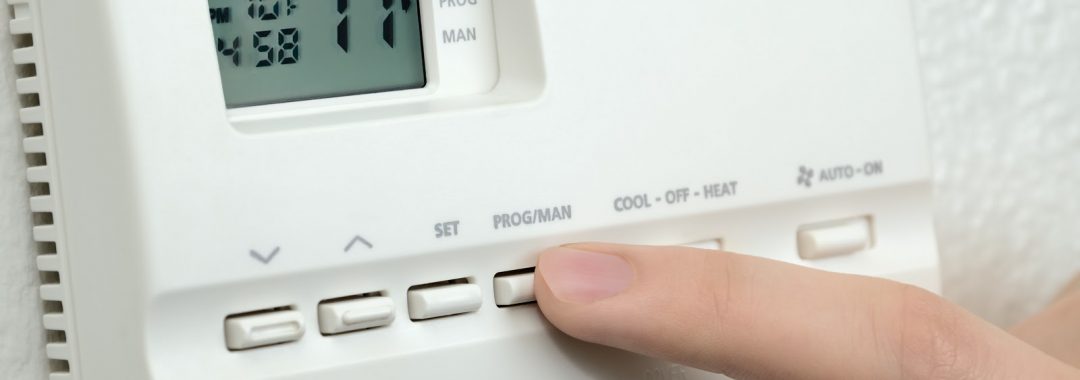Is your home suffering from an inconsistent indoor climate, but your wallet seems to suffer from a consistent decrease in funds going toward your heating and A/C bill? It might be time to check the functionality of your home’s thermostat. Keep reading for the DIY step-by-step.
Northern Colorado homes in Fort Collins, Denver, and across the Front Range get a lot of quick weather changes. The overall comfort of your home shouldn’t be compromised by something as simple as an old thermostat.
Before implementing the following steps, first, determine if your thermostat is attempting to control the temperature inside your home at all. This can be completed quite simply: turn on the heat function of your home’s thermostat until it reaches 70 degrees Fahrenheit or above. Then, switch your system to A/C, and set it to run until it reaches 66 or so. If you do not hear your HVAC system activate and begin to cool your home, this is a sign of a potential thermostat problem.
Step 1: Turn off HVAC power
This can be done by switching the furnace to the off position if your system has an on/off switch. If not, you may need to cut off power by locating your home’s breaker box and switching off the circuit lever labeled “HVAC” or “furnace.”
Step 2: Remove thermostat cover
Use a flathead screwdriver to remove the main plate of the thermostat so that you are able to see inside. Depending on your thermostat model, you may have to remove the entire body of the device. This should expose the wires inside.
Step 3: Remove wires from terminals
The wires located inside your thermostat should be screwed to terminals marked R (red), W (white), G (green), Y (yellow), and C (common). Some thermostats have only two wires: either Red and White or Red and Green. Make note of these labels, or simply snap a photo with your phone.
Unscrew and remove the wires from their various terminals. Be careful not to let them fall back into the hole in the wall. You can wrap the wires around a pencil if this is a concern. If there are more than two wires, pick only Red and White (standard colors for power and heat).
Twist the bare ends of the two wires (heat and power) together. Ensure that no other wires are making contact with each other or with these two.
Step 4: Turn the HVAC power back on
Return power to the furnace via the HVAC circuit breaker or furnace switch. If the blower turns on without the connection to the thermostat and the furnace burner ignites, the thermostat is defective or not connected properly.
Turn off the HVAC unit circuit breaker and untwist the R and W wires.
Step 5: Test other wires
If your system has all wires previously described, you may complete this test with the following wire combinations in addition to the R and W test.
Twist the R and Y wires together and turn on the HVAC power. Check to see if the air conditioning system ignites. Then, flip the HVAC switch back off.
Twist the R and G wires together and turn the HVAC breaker back on. The fan should now be working. After the test, turn off the HVAC power and untwist the wires.
If the HVAC passed all of these tests, the thermostat is faulty and needs to be replaced.
Time to Replace Your Thermostat
If you’ve determined your thermostat is non-functional and you’re tired of wasting money on a heating or cooling system that isn’t getting the job done, it may be time for a thermostat repair or a complete replacement. It’s time to call the professionals.
Don’t get left cold inside your home with an empty wallet. Call Good Guys Home Services in Fort Collins today and let us make it right!

